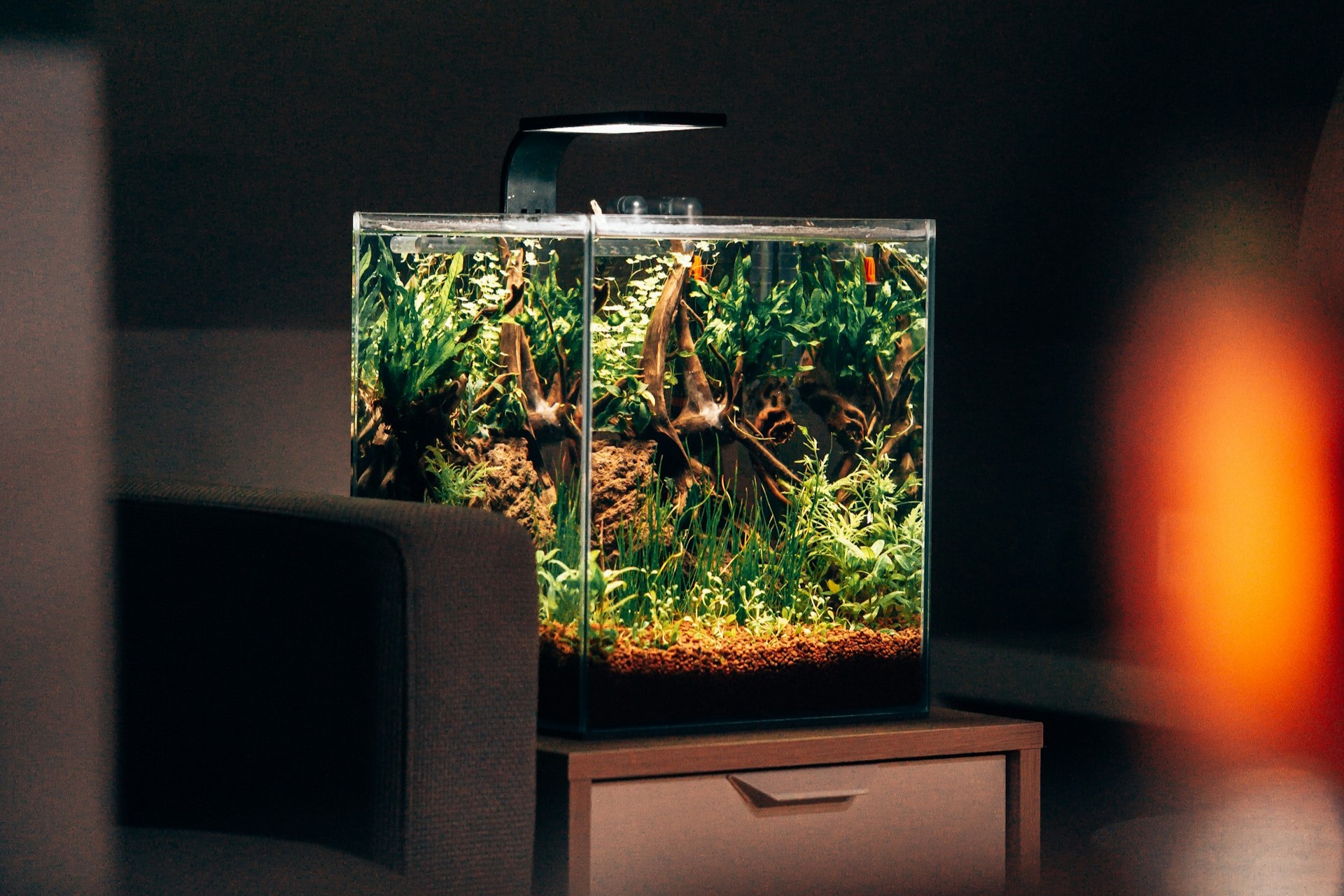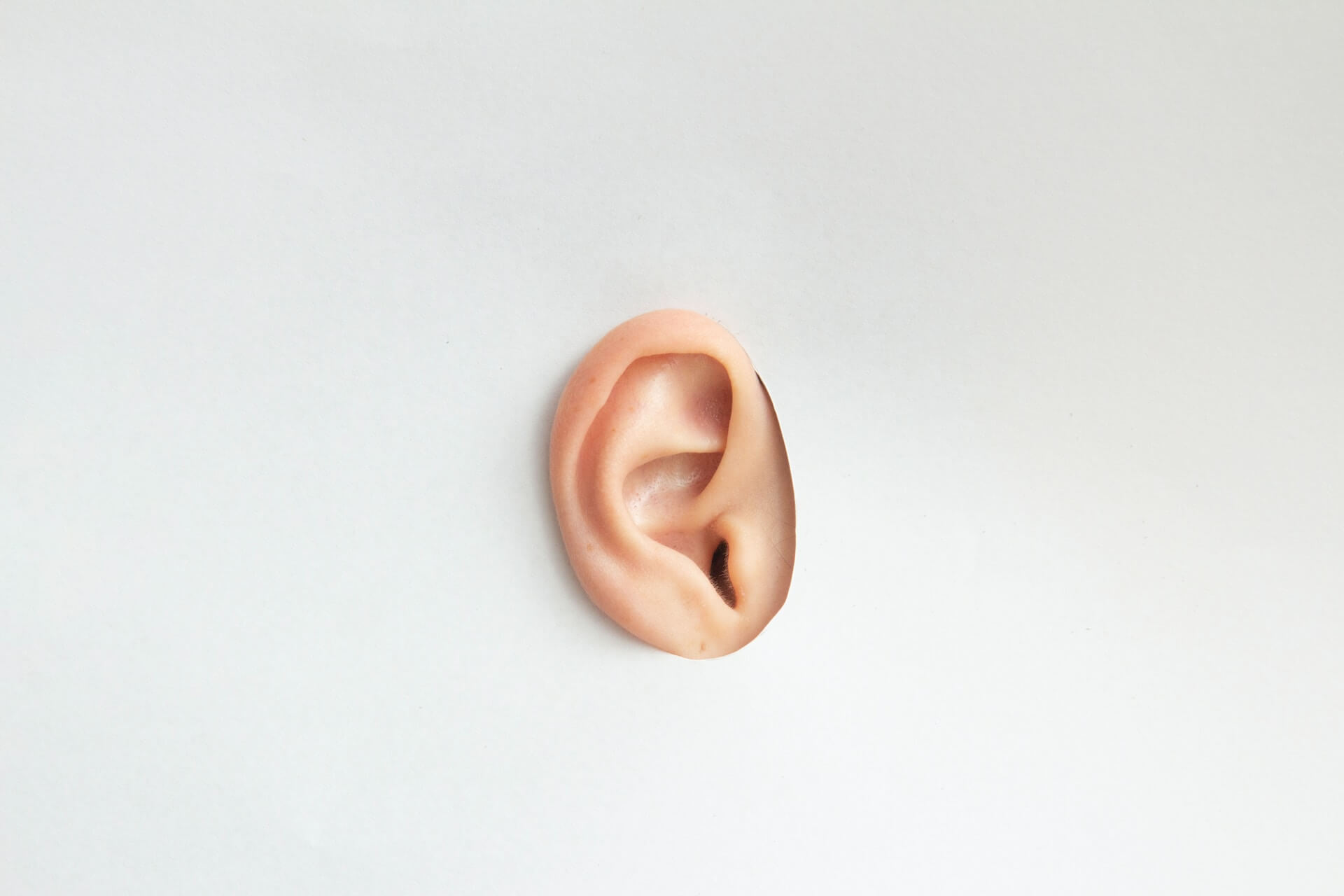Is a Portable Fire Pit Right for Your Home?
Feb 21, 2024
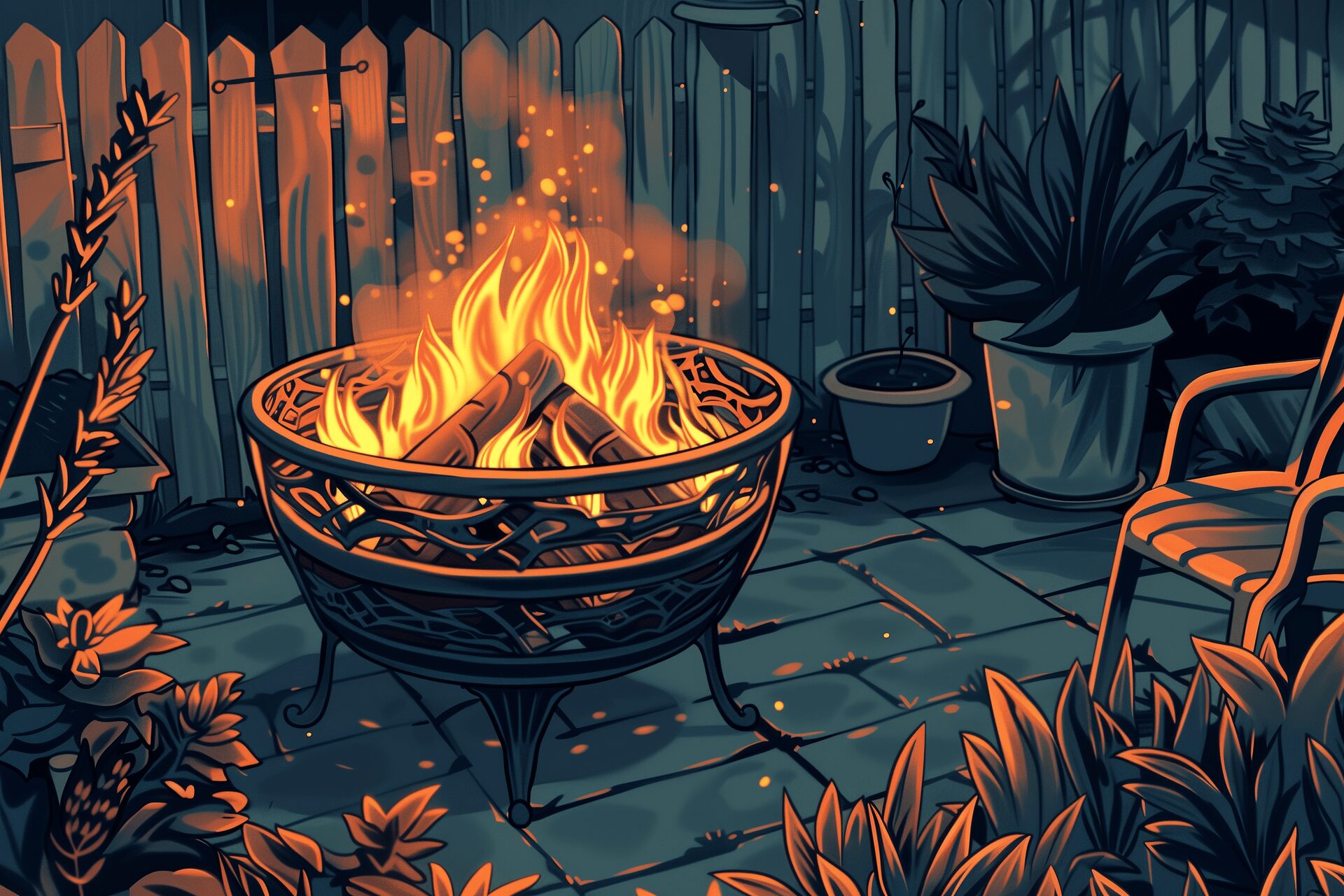
As an Amazon Associate, Modded gets commissions for purchases made through links in this post.
Adding a portable fire pit to your home can make your patio a destination. It can instantly become your family’s favorite gather-round place — the ultimate venue of fond memories you can cherish forever.
Is it suitable for your house? Get your pressing questions about portable fire pits answered to determine whether buying one is a brilliant idea.
What Is the Difference Between a Fire Pit and a Portable Fire Pit?
The difference between a fire pit and a portable fire pit is that the former is a permanent fixture in the yard, while the latter is mobile.
Permanent fire pits are an option if you have real estate to spare. Building one gives your patio a stunning focal point, extending your outdoor living season. These fire pits are customizable — perfect when you want something unique to your home.
Hiring professionals to design and construct one is wise because they offer sound advice regarding safety and aesthetics. Alternatively, you can buy a DIY block kit to set up your own from the ground up.
On the other hand, a portable fire pit can make your outdoor area more cozy even when you lack space in a budget-friendly way. If you want to update your yard’s look, you can quickly relocate it and create a new center of attention.
Portable fire pits are lightweight and movable, so you can bring them out only when necessary and keep them in storage to protect them from the elements when unused.
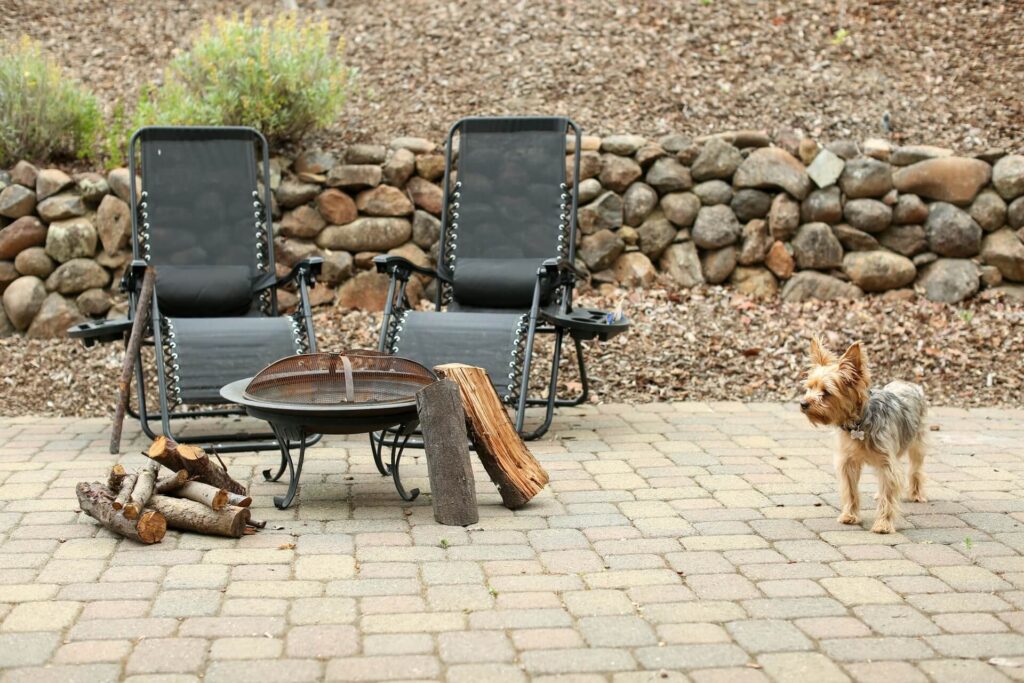
They’re off-the-shelf products, but they come in various styles. The design possibilities are endless, so you’ll find a fitting one for your home if you look hard enough.
What Can You Burn in a Portable Fire Pit?
Portable fire pits support firewood, wood pellets, firelogs, propane and gel. Natural gas is synonymous with permanent fire pits since this fuel runs through a buried supply line.
Which heat source is the best for portable fire pits? It depends on what you want to achieve. Each option has pros and cons, so prepare to make compromises whatever you choose.
Wood creates a nostalgic campfire-like vibe. It crackles and pops, makes bright yellow-orange flames, and gives off an unmistakable scent. Emitting smoke is the flip side of using wood. Its particulates can trigger allergic reactions. Pollution can get you on your neighbors’ bad side. Burning wood can also be laborious, produce sparks, and leave a mess.
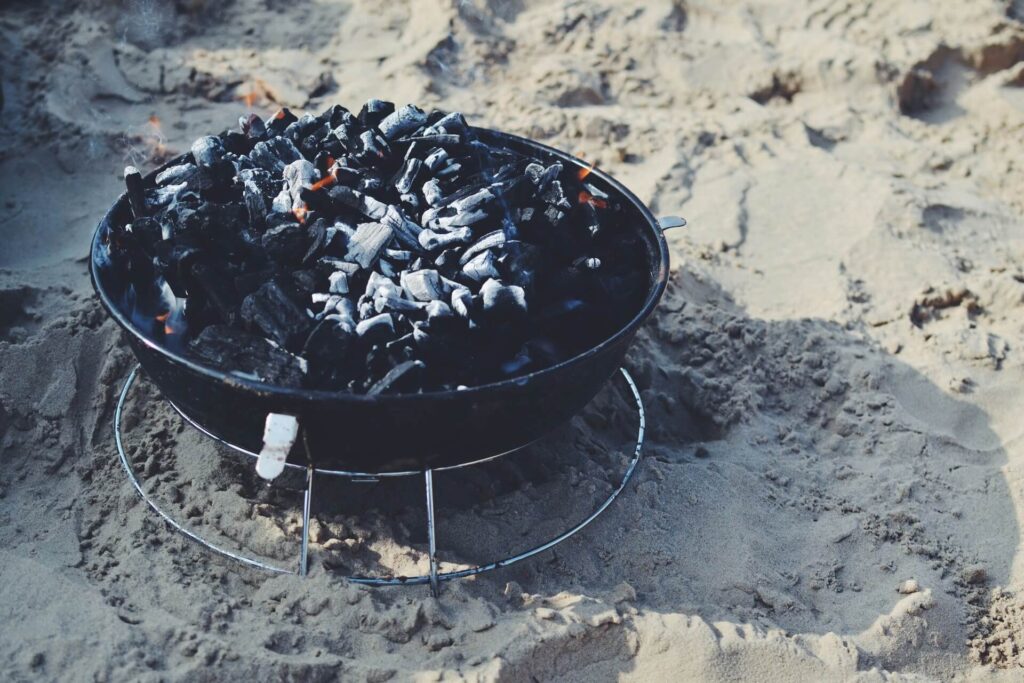
Wood pellets and firelogs are excellent wood alternatives. Both fuels are more efficient, simplify storage, and emit less smoke. These manufactured products are usually more expensive than traditional firewood.
Propane produces a fire at the push of a button and releases little smoke. It’s super safe and conveniently portable. Its price varies by location and can fluctuate due to domestic and international factors beyond your control.
Gel can burn as long as firewood and produce similar-looking flame colors but has zero smoke and ash. It’s less of a fire risk, but it can get expensive, like propane, because the cost of refills accumulates over time.
How Hot Does a Portable Fire Pit Get?
A portable fire pit can get as hot as more than 100,000 British thermal units (Btus). Woodfire produces the highest heat output, although the exact amount depends on the fuel’s moisture content at the start of combustion.
Oven-dry resinous softwood species have a Btu of 9,050 per pound — greater than oven-dry hardwood, freshly cut Missouri hardwoods and air-dried hardwood firewood.
Other fuels have less heat output, which is more of a feature than a flaw. Not every situation calls for a campfire-level blaze that may unnecessarily increase the risk of sustaining thermal burns and getting blisters. Sometimes, you want your fire pit’s flames to last longer without adding more fuel and to emanate warmth more consistently and evenly.
What Do You Put in the Bottom of a Portable Fire Pit?
Sand, dirt, crushed gravel, lava rocks, paving stones and bricks are what you can put in the bottom of your portable fire pit. A damp base layer can extinguish the fire, so start with dry sand. Then, top it with the other noncombustible materials.
Not all portable fire pit designs can accommodate them all. If you can only fit one into your unit, select dry sand. It helps contain the fire and smother the embers when you’re done. Extinguishing a fire with dry sand creates no hot steam like water does.
Where Do You Put a Portable Fire Pit?
A good rule of thumb is to put your portable fire pit at least 10 feet away from your home, any trees with overhanging branches and the property line.
Local codes spell out the do’s and don’ts in detail, so consult your local building and fire departments to know the rules you should follow to prevent accidents.
Can You Put a Portable Fire Pit on a Deck?
You can put a portable fire pit on a wooden or composite deck with a protective surface underneath it. A stone or metal pad can shield your decking material from heat and sparks. Outfitting your unit with a screen is also good practice to keep embers from becoming airborne and igniting nearby flammable items.
Can You Use a Portable Fire Pit Indoors?
You can use your portable fire pit indoors when its manufacturer designed it for such a purpose.
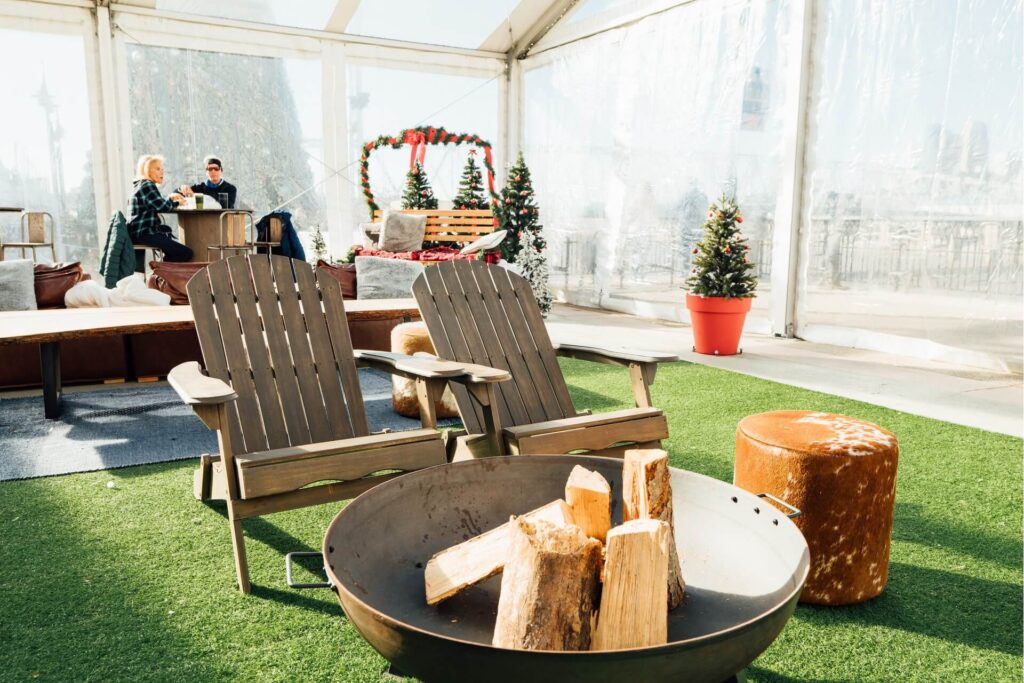
Having a fire pit inside the house is generally dangerous since its fuel may emit harmful gasses like carbon monoxide, which kills no less than 420 people and sends more than 100,000 to the emergency room every year. Exclusively use one outdoors when your heat source releases air contaminants — odorless or not — to keep your loved ones safe.
Are Portable Fire Pits Safe?
Portable fire pits are safe when used correctly and responsibly. No unit is 100% safe, so mind its location, handle fuel carefully, and prevent the fire from becoming too large. You must also keep extinguishers — such as water and sand — within reach, ensure kids and pets observe a safe distance from flames and embers, and take fire pit maintenance seriously.
How Long Do Portable Fire Pits Last?
Portable fire pits can last a long time with proper care. Durable materials, like stone, stainless steel and aluminum, comprise them. You may not need a replacement for more than a decade if you religiously follow the manufacturer’s maintenance instructions.
Is a Portable Fire Pit for You?
A portable fire pit can be a fantastic addition to your home exterior space. There’s no avoiding its inherent risks, so familiarize yourself with the hazards that come with it to manage them accordingly.




